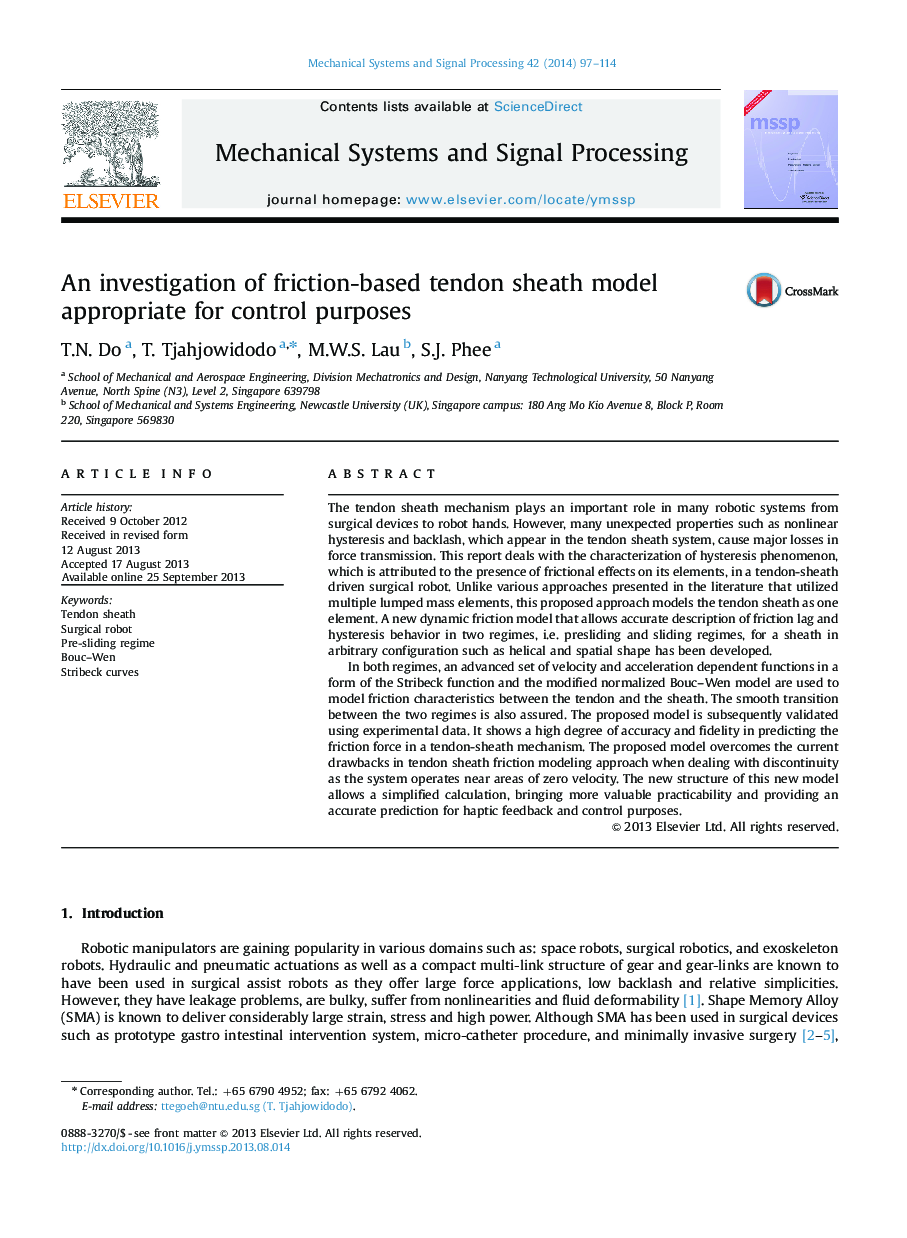| Article ID | Journal | Published Year | Pages | File Type |
|---|---|---|---|---|
| 561169 | Mechanical Systems and Signal Processing | 2014 | 18 Pages |
•Develop a friction model with nonlocal memory for tendon-sheath system.•Design and build setup for experimental validation.•Experimental model-parameter identification on the test setup.•The hysteresis behavior on the pulled/released phase is well captured.•The friction lag in sliding/pre-sliding regimes with smooth transitions is well modeled.
The tendon sheath mechanism plays an important role in many robotic systems from surgical devices to robot hands. However, many unexpected properties such as nonlinear hysteresis and backlash, which appear in the tendon sheath system, cause major losses in force transmission. This report deals with the characterization of hysteresis phenomenon, which is attributed to the presence of frictional effects on its elements, in a tendon-sheath driven surgical robot. Unlike various approaches presented in the literature that utilized multiple lumped mass elements, this proposed approach models the tendon sheath as one element. A new dynamic friction model that allows accurate description of friction lag and hysteresis behavior in two regimes, i.e. presliding and sliding regimes, for a sheath in arbitrary configuration such as helical and spatial shape has been developed.In both regimes, an advanced set of velocity and acceleration dependent functions in a form of the Stribeck function and the modified normalized Bouc–Wen model are used to model friction characteristics between the tendon and the sheath. The smooth transition between the two regimes is also assured. The proposed model is subsequently validated using experimental data. It shows a high degree of accuracy and fidelity in predicting the friction force in a tendon-sheath mechanism. The proposed model overcomes the current drawbacks in tendon sheath friction modeling approach when dealing with discontinuity as the system operates near areas of zero velocity. The new structure of this new model allows a simplified calculation, bringing more valuable practicability and providing an accurate prediction for haptic feedback and control purposes.
